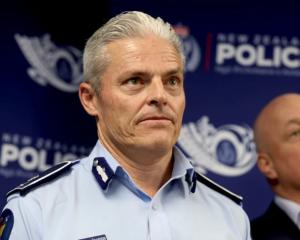There are more than 11,000 Covid cases in the New Zealand community today - but the real number could be double that, health officials say.
There were 11,382 new cases in the country on Thursday and 23 virus-related deaths. The seven-day rolling average of community case numbers today is 9826.
In the Canterbury/West Coast DHB area, there are 1737 new community cases today. In South Canterbury, there are 147 new cases.
There are now 68,737 active cases in New Zealand.

Of the 765 people with the virus in hospitals around New Zealand, 11 are in ICU or HDU, 94 are in Canterbury hospitals and 15 are in South Canterbury hospitals.
The other cases in hospital are spread across Northland: 17; Waitematā: 133; Counties Manukau: 54; Auckland: 105; Waikato: 55; Bay of Plenty: 47; Lakes: 17; Hawke’s Bay: 27; MidCentral: 33; Whanganui: 18; Taranaki: 15; Tairawhiti: 4; Wairarapa: 12; Capital & Coast: 32; Hutt Valley: 27; Nelson Marlborough: 12; West Coast: 3; and Southern: 45.
All of the 23 deaths reported today occurred over the past seven days. Seven of the deaths were in Canterbury, four were from the Auckland region, one was from Waikato, one was from Bay of Plenty, one was from Lakes, one was from Taranaki, one was from Hawkes Bay, two were from MidCentral, one was from the Wellington region, two were from Nelson/Marlborough, one was from South Canterbury and one was from Southern. One was aged younger than 10, five were in their 70s, nine were in their 80s and eight were aged over 90. Of these people, 11 were women and 12 were men.
The total number of publicly reported deaths of people with Covid-19 is now 1760 and the seven-day rolling average is 20.
Covid-19 Minister Ayesha Verrall, director-general of Heath Dr Ashley Bloomfield and new Health NZ chief executive Margie Apa briefed media on the response to the rising case numbers.
Verrall said NZ would remain at the orange traffic light setting. The Government had weighed up whether moving to red would make a significant difference, but gathering limits would only offer "an incremental benefit".
Free masks and rapid antigen tests (RATS) would be offered at collection sites, Verrall said.
People would no longer have to meet the criteria of having Covid symptoms or being a household contact or a critical worker.
However, she said people should still book in for RAT collection, to ensure there was stock.
Verrall said if schools took up the support of free masks in the next term, it would make a difference: "Please use it."
A new campaign to try to push along the boosters campaign would also be run.
Wearing a mask, getting boosted and staying home if sick were more effective tactics than a return to the red setting, she said.
Cases could peak at 21,000 a day - Bloomfield
Bloomfield said that with more open borders, and more cases being detected at our border, the number of cases has increased week on week.
Cases were expected to peak at 21,000 cases a day - and hospitalisations were expected to peak at more than 1000.
Bloomfield said measures could be used to try to bring down those numbers to below 1000. "We anticipated second wave of Omicron, we've planned for it. The public health measures in place and the actions of us all will be what makes the difference here."
Correctly wearing a surgical or N95 mask could reduce the risk of infection by about half.
He urged those who were not wearing masks because they were uncomfortable to think of health workers, who had to wear them day in and day out.
People should still be testing and follow the isolation rules. People should also get their flu and Covid-19 booster vaccinations.
The six-month interval for boosters was under close watch.
"My plea to you, to everybody in New Zealand, is to please do you bit."
The BA.5 variant was better at evading immunity, Bloomfield said.
"That is important for people who have been infected previously."
According to the latest data, the BA.2 subvariant of Omicron accounted for 41 per cent of cases, BA.4 amounted to 11 per cent and BA.5 47 per cent. BA.5 is expected to become the dominant variant.
Only 2-3 per cent of cases now were those who had been re-infected, but he was expecting that to increase.
He said he expected only about half the number of actual cases were being detected.
The rolling seven-day average for community cases is now 9826.
Health staff prioritising urgent care
Health NZ chief executive Margie Apa said they were closely monitoring the impact on the health system.
The workforce was facing high demand in hospitals as well as primary care.
The health sector was also battling with worker shortages due to sickness among staff, which meant longer waits than were desirable.
Apa said they were working regionally to try to prioritise urgent care, while also trying to keep non-urgent surgery and procedures going. She said it was not an ideal situation but "we ask for some patience from our communities."
Urban and metro hospitals were especially hard hit by staff being sick. Health NZ was working on ways to offer more virtual or telephone health services.
There were also efforts to allow more after-hours help.
Apa said this week some hospitals had found more than 200 people were reporting in sick in any one day.
Free masks are also in the plan as Prime Minister Jacinda Ardern urged people to stick to the rules of the orange setting.
Despite the increase in case numbers and hospitalisations, Ardern has again ruled out a move to red, saying the most effective steps are those already in play in orange – a combination of mask use, isolation periods and vaccinations.













